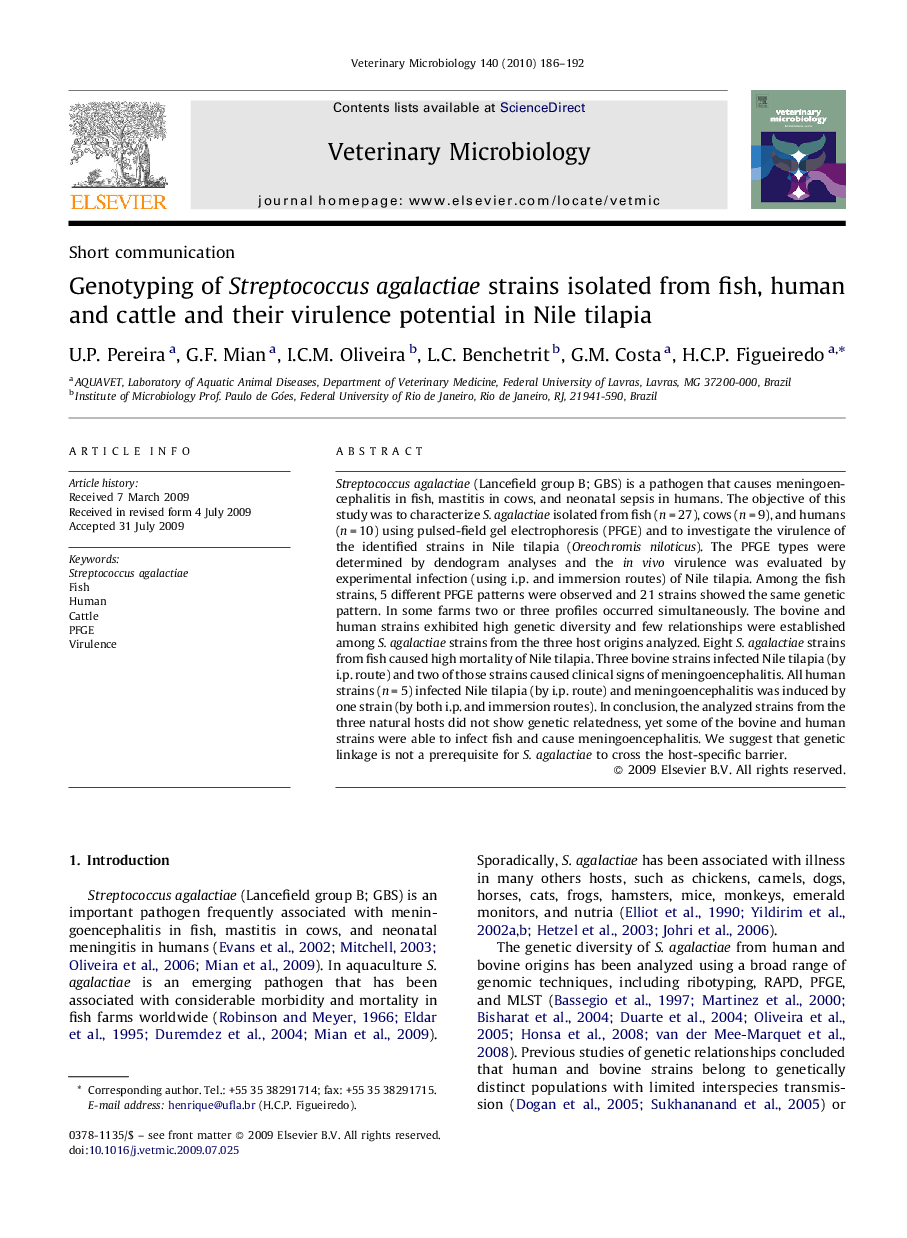| Article ID | Journal | Published Year | Pages | File Type |
|---|---|---|---|---|
| 5801874 | Veterinary Microbiology | 2010 | 7 Pages |
Streptococcus agalactiae (Lancefield group B; GBS) is a pathogen that causes meningoencephalitis in fish, mastitis in cows, and neonatal sepsis in humans. The objective of this study was to characterize S. agalactiae isolated from fish (n = 27), cows (n = 9), and humans (n = 10) using pulsed-field gel electrophoresis (PFGE) and to investigate the virulence of the identified strains in Nile tilapia (Oreochromis niloticus). The PFGE types were determined by dendogram analyses and the in vivo virulence was evaluated by experimental infection (using i.p. and immersion routes) of Nile tilapia. Among the fish strains, 5 different PFGE patterns were observed and 21 strains showed the same genetic pattern. In some farms two or three profiles occurred simultaneously. The bovine and human strains exhibited high genetic diversity and few relationships were established among S. agalactiae strains from the three host origins analyzed. Eight S. agalactiae strains from fish caused high mortality of Nile tilapia. Three bovine strains infected Nile tilapia (by i.p. route) and two of those strains caused clinical signs of meningoencephalitis. All human strains (n = 5) infected Nile tilapia (by i.p. route) and meningoencephalitis was induced by one strain (by both i.p. and immersion routes). In conclusion, the analyzed strains from the three natural hosts did not show genetic relatedness, yet some of the bovine and human strains were able to infect fish and cause meningoencephalitis. We suggest that genetic linkage is not a prerequisite for S. agalactiae to cross the host-specific barrier.
